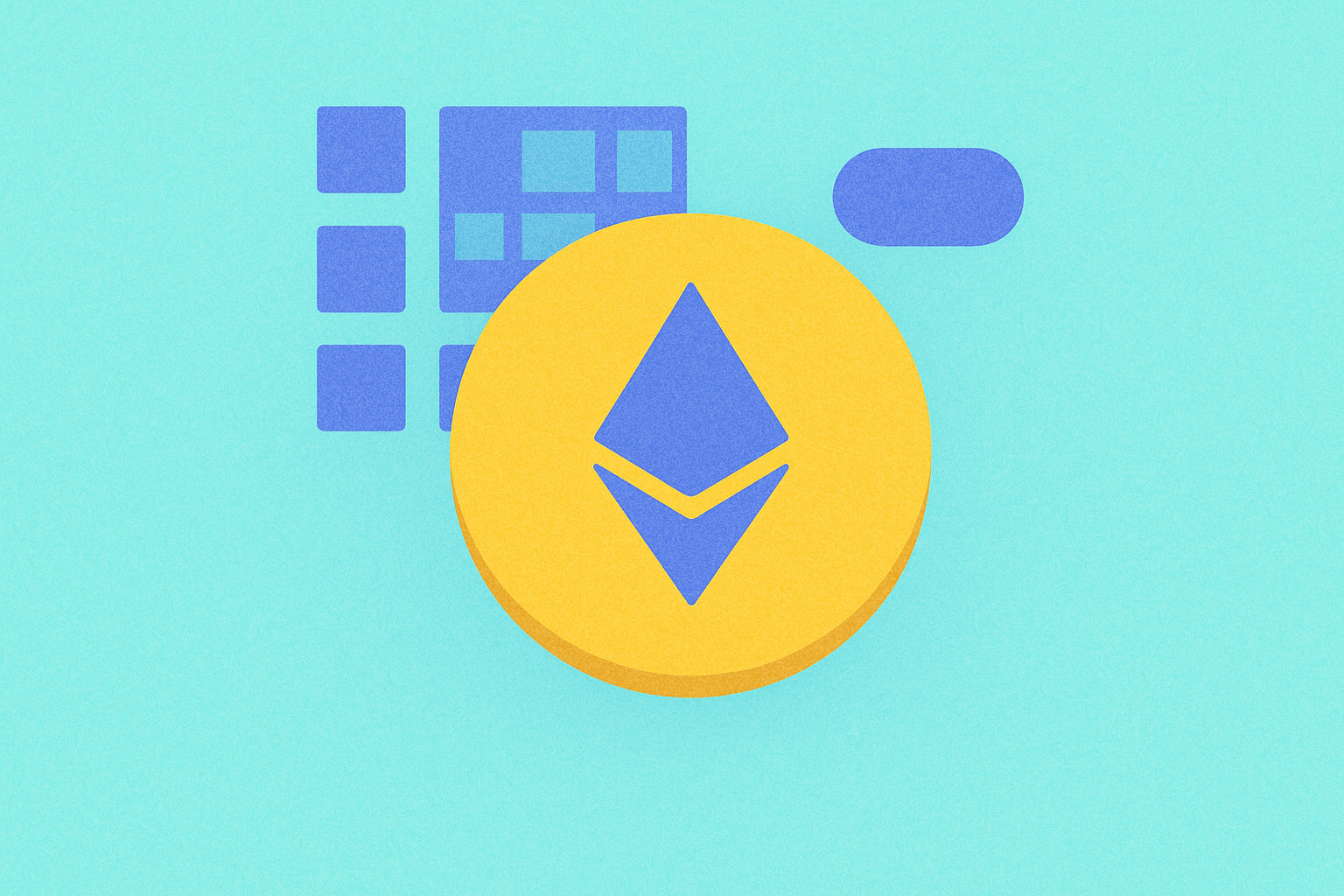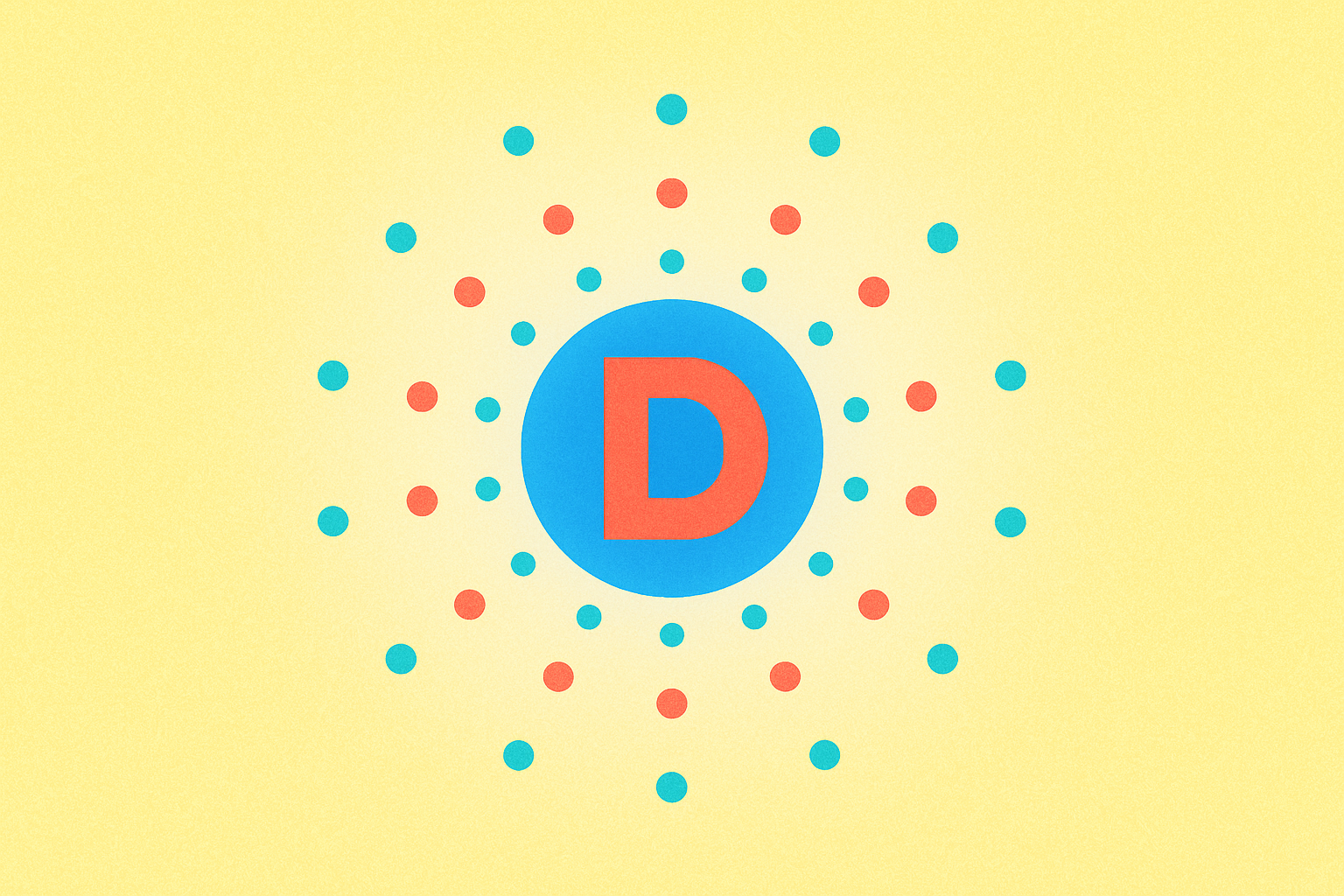Bittensor (TAO): Merkeziyetsiz AI Öğrenme Ağı



Bittensor, AI modelleri ve bilgi katkılarında bulunan kişileri ödüllendiren açık kaynaklı bir protokoldür. Bu, herkesin kendi nöronunu ekleyip, tüm beyin daha akıllı hale geldiği için TAO tokenleri ile ödeme aldığı küresel bir beyin gibidir. Projenin kripto ekosistemindeki amacı, AI geliştirmeyi demokratikleştirmektir – tek bir Büyük Teknoloji şirketi ağı sahiplenmez ve bağımsız geliştiricilerden veri bilimcilerine kadar herkes işbirliği yapabilir ve kazanabilir. Bittensor etrafındaki ton hem eğlenceli hem de teknik: AI zihinlerinin blockchain teşvikleriyle buluştuğu bir bilim kurgu geleceğini hayal edin – işte Bittensor'un inşa ettiği şey!
Tarihsel Arka Plan ve Fiyat Performansı
Bittensor’un yolculuğu 2021 yılında, ekibin (Opentensor adı altında) bu iddialı projeyi başlatmasıyla başladı. Başlangıçta sessizce ilerledi, ancak 2023 yılının başlarında TAO token'ı nihayet borsalara girdi - ve ne büyük bir çıkış! Başlangıçta TAO sadece birkaç sente işlem gördü (gerçekten radarın altında), ancak merkeziyetsiz AI yapan bir kripto proje hakkında duyurular yayıldıkça, fiyatı fırladı. 2023 ortalarında TAO zaten onlarca dolara ulaştı ve 2023 yılının sonlarında token, daha geniş AI kripto heyecanı arasında yüzlerce dolara yükseldi. Tüm zamanların en yüksek fiyatı Mart 2024'te geldi; TAO, bir heves (ve belki de spekülasyon) çılgınlığı sırasında kısa bir süreliğine yaklaşık 750$'a ulaştı. Bu hızlı yükseliş, dalgalanma ile takip edildi: birçok kripto varlığı gibi, TAO da dramatik artışlar ve düşüşler yaşadı. 2024 ortalarında heyecanın azalmasıyla düştü, ardından 2024'ün ilerleyen dönemlerinde yeni teknoloji güncellemeleri ve borsa listelemeleri (Coinbase, birisi?) topluluk heyecanını yeniden ateşlediğinde ikincil zirveler yaşadı. 2025 yılı itibarıyla TAO, hala erken günlerinin çok üzerinde, orta üç haneli rakamlarda istikrar kazanmaya başladı - bu, hem projenin ilerlemesine hem de kripto pazarının çalkantılı dalgalanmalarına bir kanıt.

Tarihsel olarak, Bittensor'un piyasa performansı tek bir kelimeyle özetlenebilir: lunapark. Ancak, bu fiyat dalgalanmaları projenin büyüme sancılarını ve zaferlerini yansıtıyor. Her zirve genellikle yeni alt ağların başlatılması, ortaklık duyuruları veya basitçe kripto pazarının AI ile ilgili her şeye olan döngüsel aşkı gibi haberlerin ardından geliyordu. Teknolojiye inanan erken benimseyenler, özellikle TAO'yu 1 $'ın altında madencilik yapan veya satın alanlar için cömert bir şekilde ödüllendirildi (efsane, bazılarının TAO'yu kuruşlar karşılığında aldığı yönündedir!). Buna karşın, 700 $ civarında FOMO ile satın alan sonradan gelenler, mide bulandıran düşüşlere katlanmak zorunda kaldı. Bu tarih, Bittensor'un bu kadar dikkat çekmesinin nedenini belirliyor: bu sadece başka bir token değil, merkeziyetsiz AI'nin cesur bir vizyonuna bağlı, bu da insanları heyecanlandıracak kadar güçlü ki fiyatın fırlamasını sağlıyor - ama bu heyecan aynı hızla soğuyabilir.
Bittensor'un Çalışma Şekli: Alt Ağlar, Madenciler ve Doğrulayıcılar
Bittensor teknolojisini anlamak anahtar bir unsur (ve oldukça ilginç!). Ağ, her biri belirli bir AI görevine yönelik uzmanlaşmış bir alan olan alt ağlara yapılandırılmıştır. Alt ağları, her birinin belirli bir AI hizmeti türüne odaklandığı farklı "odalar" olarak düşünün (bir oda dil modelleri için, diğeri görüntü tanıma için olabilir, vb.). Her alt ağda, iki ana oyuncu türü vardır: madenciler ve doğrulayıcılar.
- Bittensor'daki madenciler, Bitcoin madencileri gibi hash'leri hesaplamakla uğraşmıyor; bunun yerine, AI modelleri çalıştırıyorlar. Bu, örneğin, soruları yanıtlayan veya görüntü üreten sinir ağları olabilir. Madenciler, kendi alt ağlarında en iyi AI yanıtlarını veya hizmetlerini sağlamak için rekabet ederler. Temelde, modelin beyin gücünü ağa katkıda bulunuyorlar.
- Validatorler, hakemler veya değerlendiriciler gibidir. Madencilerin performansını sorgulayarak ve yanıtların kalitesini puanlayarak kontrol ederler. Validatorler kritik öneme sahiptir: madencilerin sistemi kandırmak için sadece saçmalık üretmediğinden emin olurlar. Her validator, kendi alt ağındaki madencileri, madencinin çıktılarının ne kadar yararlı veya doğru olduğuna dayanarak bağımsız olarak sıralar.
Bittensor'un sır reçetesi teşvik mekanizmasıdır. Yuma Konsensüsü (YC) adını verdiği bir konsensüs algoritması kullanır - bunu blok zincirinde karmaşık bir puanlama sistemi olarak düşünebilirsiniz. Doğrulayıcılar madenciler için derecelendirme gönderir ve YC bunları toplayarak kimin ödüllendirileceğine karar verir. İncelik, YC'nin doğrulayıcıları geçmiş güvenilirliklerine (ve stake edilmiş TAO'ya) göre değerlendirmesidir, bu nedenle dürüst olmayan bir doğrulayıcı (kötü bir madenciyi öne çıkaran ya da iş birliği yapan) zamanla göz ardı edilir. Sonuç? Dürüst çalışma güven ve ödül kazanır. En yüksek toplam puana sahip madenciler (yani en fazla doğrulayıcının iyi iş çıkardıklarına dair hemfikir olduğu) ağın ihraçından yeni basılmış TAO kazanır ve doğrulayıcılar da iyi yargıları için ödüller kazanır. Bu, zincir üzerinde yürütülen bir meritokratik yetenek gösterisi gibi!
Başka bir yenilikçi yön, Dinamik TAO ve alt ağ tokenleridir. Bir alt ağa katıldığınızda, TAO'yu ona stake edebilir ve o alt ağda stake'inizi temsil eden bir alt ağ spesifik tokeni (bazen "alpha" tokeni olarak adlandırılır) alabilirsiniz. Bu, her alt ağ için otomatik bir piyasa yapıcı aracılığıyla mini bir ekonomi oluşturur – madencileri ve doğrulayıcıları alt ağın başarısına bağlı tutar, çünkü oyunun içindedirler. Kısacası, Bittensor'un tasarımı herkesin gerçekten kullanışlı yapay zeka üretmesini teşvik ediyor. Eğer bir madencinin modeli kötü ise, doğrulayıcılar düşük puanlar verecek ve çok az kazanacak. Eğer bir doğrulayıcı tembel ise ya da hile yapmaya çalışıyorsa, etkisi azalır. Zamanla, yalnızca yüksek kaliteli yapay zeka katkıları ve adil doğrulamalar kârlı olur. Bu kendini düzenleyen ekosistem, Bittensor'u yalnızca merkeziyetsiz hesaplama değil, aynı zamanda merkeziyetsiz öğrenme ağı haline getiriyor. Bu, GPU'nuzu körü körüne kiralamakla ilgili değil; bir yapay zeka kolektifini eğitmek ve onu daha akıllı hale getirmek için ödeme almakla ilgili.
Kullanım Alanları ve Kimler Faydalanır
Bittensor, farklı gruplar için bir olasılıklar oyun alanı açar:
- AI Geliştiricileri/Araştırmacılar: Eğer AI modelleri geliştiriyorsanız, özellikle açık kaynak olanlar, Bittensor bir cennet. Modelinizi ilgili bir alt ağa (örneğin, chatbot AI için bir dil modeli alt ağı) entegre edebilirsiniz. Ağa AI hizmetleri sunmanız (soruları yanıtlama vb.) karşılığında, modeliniz TAO ödülleri kazanabilir. Bu çığır açıcı – AI'nızın gerçek kullanım tarafından test edildiği ve iyi performans gösterdiğinde para kazandığınız bir küresel test alanına sahip olmak gibi. Nakit sıkıntısı çeken bir AI girişimi veya bağımsız bir araştırmacı için, Bittensor, ruhunuzu Büyük Teknolojiye veya yatırımcılara satmadan, dağıtılmış bir kullanıcı tabanına ve fonlamaya (token aracılığıyla) erişim sunuyor.
- Veri Bilimcileri: Genellikle, AI modellerini eğitmek ve değerlendirmek çok fazla veriye ve hesaplamaya ihtiyaç duyar. Bittensor'da, veri bilimcileri modeller veya belirli kalite metriklerine odaklanan özel doğrulayıcılar katkıda bulunarak işbirliği yapabilirler. Bu, AI yeniliğini kitlesel olarak sağlama konusunda yeni bir yol. Örneğin, bir veri bilimcisi niş bir alana (örneğin, tıbbi NLP) odaklanabilir ve bunun için bir alt ağ kurabilir - madencileri tıbbi AI modelleri oluşturmak ve doğrulayıcıları doğruluğu sağlamak için çekebilir. Sonuç, herhangi bir tek şirketin inşa edebileceğiyle rekabet eden toplum odaklı bir AI hizmeti olabilir ve her katkıda bulunan, kendi payları için adil bir TAO payı alır. Ayrıca, tüm etkinlik zincir üzerinde şeffaf olduğundan, araştırma tekrarlanabilirliği ve kredi atfı yerleşik olarak bulunmaktadır.
- Token Sahipleri/Yatırımcılar: TAO, yalnızca AI meraklıları için bir oyun parası değil; daha az teknik olanlar için de rolleri var. Sahipler, TAO'yu doğrulayıcılara stake edebilir veya devredebilir, böylece kaliteli modellerin derlenmesinde iyi olanları desteklemiş olurlar. Karşılığında, ödüllerin bir kısmını kazanırlar (AI kalitesi için yield farming gibi). Token sahiplerinin aynı zamanda yönetişim gücü vardır - Bittensor daha merkeziyetsiz bir yönetişime doğru ilerliyor, böylece TAO sahipleri tekliflerde oy kullanabilirler (emisyon oranlarındaki değişiklikler, yeni alt ağ onayları vb. gibi). Ve tabii ki, birçok sahip basitçe spekülatör veya merkeziyetsiz AI'ya uzun vadeli inananlardır; Bittensor'un AI geleceği için kritik altyapı haline gelmesi durumunda değerinin artmasını bekleyerek TAO tutuyorlar. Onlar için TAO, bir sonraki AI atılımının Google veya OpenAI'den değil, insanların merkeziyetsiz bir ağından gelebileceği fikrine yapılan bir yatırımdır. Yüksek risk? Kesinlikle - ama Bittensor'un vizyonu gerçekleşirse potansiyel olarak yüksek ödül.
Özetle, Bittensor bir kazan-kazan durumu yaratır (kazan!): geliştiriciler bir platform ve teşvikler alır, AI hizmetlerinin kullanıcıları (hatta diğer Aİ'ler de kullanıcı olabilir!) modellerin bir pazarına erişim kazanır ve token sahipleri, ağın "beyni" büyüdükçe ve daha yetenekli hale geldikçe TAO'ya olan fayda ve talebin arttığını görür.
Bittensor vs Diğer Dağıtık Hesaplama/Yapay Zeka Projeleri
Kripto alanı, AI ve blockchain'i birleştiren projelerle dolup taşıyor, ancak hepsi aynı değil. İşte Bittensor'un birkaç dikkate değer proje ile karşılaştırması:
- Bittensor (TAO) – merkeziyetsiz AI öğrenme ağı. Amacı, zeka için bir pazar yaratmaktır. Modeller, kaliteye göre rekabet eder ve değerlendirilir. Ham hesaplama gücünden daha çok bilgi paylaşımına odaklanır. Bittensor, esasen teşvikli bir AI modelleri sürüsü oluşturur. Bu açıdan oldukça benzersizdir, neredeyse blockchain ekonomisi tarafından yönetilen bir AI Uygulama Mağazası gibidir.
- Gensyn – Gensyn, Bittensor ile sıkça anılan başka bir dikkat çekici projedir. Dağıtık AI model eğitimi üzerine odaklanmaktadır. Gensyn, insanların makine öğrenimi modellerini eğitmek için bir hesaplama sağlayıcıları ağından yararlanmalarını sağlamayı hedefliyor; eğitim sürecinin doğru yapıldığını doğrulayan bir blockchain (bazı şık kriptografik kanıtlar kullanarak). Gensyn'i merkeziyetsiz bir AWS SageMaker olarak düşünün – modelinizi başkalarının donanımında eğitmek için token ile ödeme yapıyorsunuz. Bittensor'un aksine, Gensyn sürekli bir model ağı oluşturmaz; daha çok tek seferlik eğitim işlerine yöneliktir. Ayrıca, Gensyn, iş için bir doğrulama mekanizması kullanır (yani GPU sağlayıcısının gerçekten eğitimi yaptığını bilirsiniz). Buna karşılık, Bittensor'un doğrulaması, tek bir işten ziyade modellerin sürekli performansı ile ilgilidir. Her ikisi de GPU tekelliğini kırmayı hedefliyor, ancak Bittensor sürekli bir hizmet katmanı inşa ederken (AI modelleri ağda sorguları yanıtlamak için yaşar), Gensyn talep üzerine süper bilgisayar kiralamak gibidir.
- Render (RNDR) – Render Ağı, grafikler için merkeziyetsiz GPU renderlama ile başladı (Pixar animasyonlarının insanların GPU'larında renderlandığını düşünün), ancak şimdi AI görevlerini destekleyecek şekilde evrim geçiriyor (renderlama, AI çıkarımı – GPU yoğun her şey). Render temelde GPU gücü için bir pazar yeridir. Güçlü bir grafik kartınız varsa, işleri (3D sahneler veya belki de sinir ağı çıkarımı gibi) işleyerek RNDR token'ları kazanabilirsiniz. Render, temel olarak ham hesaplama kiralama ile daha yakındır; kendisi AI sonucunun kalitesini değerlendirmez, sadece kas gücünü sağlar. Öte yandan Bittensor, daha yüksek seviyeli bir protokoldür: sadece kas değil, aynı zamanda beyin gücü koordinasyonu. İlginç bir şekilde, birinin Render'ın GPU ağını bir Bittensor madencisi çalıştırmak için kullandığını hayal edebiliriz – AI'nın kripto dünyası böyle meta bir hale gelebilir! Render ile karşılaştırıldığında, Bittensor daha uzmanlaşmış (AI bilgisine odaklanmış) iken, Render genel amaçlı GPU dış kaynak kullanımına yöneliktir. Her ikisi de merkeziyetsizdir, ancak Render'ın merkeziyetsizliği donanım sağlayıcılarıyla, Bittensor'ın merkeziyetsizliği ise AI model sağlayıcılarıyla ilgilidir.
- Akash Ağı (AKT) – Akash, izin gerektirmeyen bir pazarda hesaplama ve depolama sunan merkeziyetsiz bir bulut olarak bilinir. AI'ye özel değildir, ancak son zamanlarda, Akash'ta AI hizmetlerini ucuz bir şekilde dağıtabileceğiniz için "AI hesaplama" anlatısının bir parçası olarak vurgulanmıştır. Karşılaştırdığımızda, Akash, merkeziyetsiz bir AWS EC2 gibidir – bir sağlayıcıdan bir Linux sunucusu alırsınız ve ne isterseniz çalıştırabilirsiniz (AI modelleri dahil). Ancak, Akash'ın AI kalitesini değerlendirmek veya ödüllendirmek için entegre bir mekanizması yoktur; sadece size kaynakları sağlar. Bittensor aslında Akash üzerinde çalışabilir (düğümleri barındırmak için), ancak Bittensor'un protokol katmanı, AI'ye özgü teşvik mantığını yönetmek için hala gereklidir. Ayrıca, Akash ve benzeri ağlar (Flux gibi diğerleri) altyapıdır, oysa Bittensor daha çok uygulama spesifik bir ağdır.
- io.net – Bu proje (genellikle IO veya IONET olarak stilize edilir) AI iş yükleri için GPU kümelenmesine odaklanan daha yeni bir oyuncudur. Web3 AI tartışmalarında Render ve Akash ile aynı nefeste anılmaktadır. io.net, AI çıkarımı (ve muhtemelen eğitim) için özelleştirilmiş merkeziyetsiz bir GPU bulutu oluşturmaya çalışıyor. Büyük fark: Bittensor, altında yatan donanım konusunda kayıtsızdır. Modelin nerede çalıştığı (PC'niz, bir bulut VM'si vb. olabilir) önemli değil, modelin nasıl performans gösterdiği önemlidir. io.net ve Hedgehog veya Hypercycle gibi diğerleri genellikle hesaplama gücü sağlamaya ve belki de AI görevlerinin zamanlamasına odaklanır. Bittensor ise AI model çıktıları etrafında bir ekonomi oluşturur. Yani, Bittensor bu projelerle "Web3'te AI'nın belkemiği kim olacak" geniş anlamında rekabet edebilirken, yaklaşımı oldukça farklıdır.
Kısacası, Bittensor ve diğerleri arasında şu fark var: bilgi pazarı ve hesaplama pazarı. Bittensor, modellerden oluşan bir ağ kurar ve zekayı ödüllendirir; diğerleri çoğunlukla donanım kiralar veya hesaplama görevlerini doğrular. Bir örtüşme var (hepsi AI tekellerini merkeziyetsizleştirmeye çalışıyor), ve bu projeler birbirini tamamlayabilir. Örneğin, biri bir Bittensor doğrulayıcı düğümü barındırmak için Akash'ı kullanabilir veya Render'ın ağını yoğun bir eğitim işi yapmak için kullanabilir ve ardından modeli Bittensor'da sunmak için dağıtabilir. Bu heyecan verici, hızla gelişen bir sektör ve Bittensor burada benzersiz bir nişe sahip.
Bittensor'un Artıları ve Eksileri
Her iddialı projede olduğu gibi, Bittensor'un da güçlü ve zayıf yanları var. Yatırımcılar ve geliştiriciler için artıları ve eksileri inceleyelim:
Artılar:
- Dağıtık AI'da İlk Hareket Eden: Bittensor, yenilikçi bir modeli öncülük ediyor. Güçlü bir erken topluluğa sahip ve gerçek teknoloji geliştirmiş olmanın avantajına sahip (sadece beyaz kağıt fikirleri değil). Bu, ona güvenilirlik ve bir ağ etkisi kazandırıyor – yeni AI projeleri genellikle Bittensor'u bir ilham kaynağı olarak referans alıyor.
- Teşvik Edilen Yenilik: Token ödül sistemi, sürekli bir iyileştirme motivasyonu sağlar. Daha iyi bir AI modeli oluşturursanız, daha fazla TAO kazanırsınız. Bu, dünya genelindeki insanların daha akıllı alt ağ modelleri inşa etme konusunda rekabet etmeleriyle AI gelişiminin daha hızlı bir tempoya ulaşmasına yol açabilir. Yatırımcılar için, bu dinamik yenilik desteği TAO'ya olan talebi artırabilir (madencilerin alt ağlarda stake yapmak için TAO'ya ihtiyacı olduğu gibi).
- Merkeziyetsizlik ve Açık Erişim: Herkes katılabilir. Bu açıklık, yeteneğin kurumsal duvarların arkasında kilitlenmediği anlamına gelir. Dünyanın uzak bir yerinde parlak bir çocuk, Bittensor üzerinde bir model dağıtabilir ve Google'da bir işe ihtiyaç duymadan bundan kazanabilir. AI alanı için bu büyük bir artı – daha fazla çeşitlilik ve yaratıcılık. TAO ekosistemi için ise, büyüyen, tabandan gelen bir geliştirici tabanı anlamına gelir.
- Güçlü Topluluk ve Memetik Çekicilik: Kripto Twitter'ında (X), Bittensor'un biraz kült bir takipçisi var. Hayranlar genellikle TAO'yu "Skynet'in madeni parası" veya "AI zihin kolektifi token'ı" olarak şaka yapıyorlar. Bu eğlenceli, meme'lenebilir yön, aslında pazarlama açısından yardımcı oluyor - fikir hayal gücünü etkilediğinde topluluk oluşturmak daha kolay. Topluluğun tutkusu bir avantaj çünkü bağlı sahipler ve katkıda bulunanlar genellikle zorluklar sırasında kalmaya eğilimli.
Eksileri:
- Yüksek Karmaşıklık: Gerçekçi olalım, Bittensor en kolay kavranan proje değil. Bir madenci veya doğrulayıcı çalıştırmak için öğrenme eğrisi dik – AI bilgisine ve blockchain bilgisine ihtiyacınız var. Bu, katılımcı havuzunu daha teknik kişilere sınırlayabilir ve yaygın benimsemeyi yavaşlatabilir. Yatırımcılar temkinli olabilir çünkü bir şey çok karmaşık olduğunda, değerini iletmek daha zor hale gelir (bu da piyasa hissiyatını etkileyebilir).
- Kanıtlanmamış Uzun Vadeli Ekonomi: Fikir mantıklı olsa da, teşvik modelinin ölçeklendiğinde sağlam kalıp kalmayacağını bilmiyoruz. Doğrulayıcılar madencilerle işbirliği yapabilir mi? Ya birisi, YC konsensüsünü sybil saldırılarıyla veya modelin doğrulama sorgularına aşırı uyum sağlamasıyla yanıltmanın bir yolunu bulursa? Sistem yeni ve beklenmedik zafiyetlere sahip olabilir. TAO sahipleri için bu belirsizlik bir risk - eğer bir hata istismar edilirse, güveni (ve fiyatı) zedeleyebilir.
- Rekabet ve Büyük Balık: Merkeziyetsiz ya da değil, Bittensor nihayetinde dev AI laboratuvarlarıyla rekabet ediyor. OpenAI veya Google, Bittensor'un tekliflerini gölgede bırakacak açık modeller veya kendi teşvik planlarını basitçe yayınlayabilir. Ayrıca, karşılaştırdığımız diğer kripto projeleri pazarın çeşitli yönlerine saldırıyor. Daha iyi veya daha basit bir merkeziyetsiz AI ağı ortaya çıkarsa, Bittensor'un önde kalmak için hızlı bir şekilde yinelemeler yapması gerekecek.
- Regülasyon Gri Alanı: Hem AI hem de kripto regüle edici inceleme altındadır. Bittensor, ikisinin kesişim noktasındadır. Şu tür sorular olabilir: Bittensor'ün AI çıktıları herhangi bir veri gizliliğini ihlal ediyor mu (kullanılan verilere bağlı olarak)? TAO bir güvenlik aracı mı? Hükümetler, kontrolsüz bir AI modelleri ağı konusunda endişeli olabilir mi (bir alt ağ derin sahte görüntüler üretiyorsa ya da bir şey yapıyorsa)? Bunlar dezavantajlardır çünkü herhangi bir regülasyon baskısı, gelişimi yavaşlatabilir veya anahtar pazarlarda kullanımı kısıtlayabilir.
Bittensor'u değerlendiren yatırımcılar ve inşaatçılar için bu artıların ve eksilerin tartılması hayati önem taşır. Vizyoner bir potansiyele sahip ancak aşılması gereken önemli engeller de var. Birçok kişi, artıların (özellikle yenilik teşvikinin) eksilerden daha fazla olduğuna dair iyimser, ancak temkinli olmak her zaman iyidir – sonuçta bu son derece gelişmiş bir teknoloji.
TAO Fiyat Tahminleri
Kristal top zamanı! Kısa ve uzun vadede TAO fiyat tahminleri hakkında konuşalım. Elbette, finansal tavsiye değil - sadece mevcut trendler, teknik analiz hisleri ve temel momentum temelinde olası yönleri eğlenceli bir analiz.
Kısa Vadeli (2025–2026)
Kısa vadede, TAO'nun görünümü büyük ölçüde kripto piyasa duyarlılığının bir sonraki dalgasına ve Bittensor'un kendi kilometre taşlarına bağlıdır. Teknik olarak, TAO, 2024'teki çılgın dalgalanmalara dayanarak güçlü bir destek olarak birkaç yüz dolar aralığında kendini kanıtlamıştır. Daha geniş kripto piyasası bir boğa dönemine girerse (birçok kişi 2025'in kripto için büyük bir yıl olabileceğini, Bitcoin'in yarılanması ve bir AI yatırım patlaması ile birlikte), TAO önceki zirvelerini geçmek üzere olabilir. Olası bir senaryo: 2025'in sonuna kadar, TAO 700+ $ seviyelerini geri kazanabilir ve 800 ile 1000 $ aralığına doğru ilerleyebilir. Bunun muhtemelen bir dizi faktör gerektirmesi gerekecektir – örneğin, Bittensor'un daha kullanıcı dostu araçlar başlatması (daha fazla katılımcıyı çekmek), belki de büyük bir ortaklık veya entegrasyon (bir AI girişimi veya hatta bir hükümet AI girişiminin Bittensor'u kullanmaya başlaması – heyecan patlaması!), ve genel olarak AI ile ilgili token'lara olan heyecan.
2026'ya baktığımızda, iki şeyden biri olabilir: konsolidasyon veya devam eden büyüme. Eğer 2025 büyük bir zirve ise (yani, TAO büyük ölçüde yükseldi ve aşırı alım durumu yaşandıysa), 2026'da bir düzeltme veya yatay hareket görebiliriz, belki de piyasanın sindirmesiyle birlikte tekrar orta üç haneli rakamlarda istikrar kazanabilir. Ancak, Bittensor'un ağ kullanımında sürekli bir artış olursa, TAO'ya olan talep (staking, işlem ücretleri vb. için) bir yükseliş trendini sürdürebilir. 2026'nın sonlarına doğru, iyimser ama gerçekçi tahminler TAO'yu dört haneli bölgedeki değerine istikrarlı bir şekilde yerleştiriyor – belki de ~$1200 veya daha fazla bir token başına. Grafikte, bu sadece spekülasyona dayanmayan, gerçek ağ değerinin sürüklediği yeni bir tüm zamanların en yüksek seviyesi olacaktır.

Kısa vadeli kripto tahminlerinin son derece zorlayıcı olduğunu unutmayın. Bu dönemdeki riskler arasında, bir kripto ayı piyasasının geri dönmesi (bu, Bittensor’un ilerlemesine bakılmaksızın TAO’yu aşağı çekebilir) veya Bittensor ağındaki teknik aksaklıklar yer alıyor. Öte yandan, yapay zeka etrafında bir çılgınlık yaşanırsa, TAO bu tahminlerin çok üzerinde yükselebilir (ne kadar hızlı hareket edebileceğini gördük). Bu nedenle, 2025-26 için 800–1200 $’ı temel bir boğa senaryosu olarak düşünün; aşağı yönlü riskler belki de düşük yüzlerde (işler kötü giderse) ve yukarı yönlü potansiyel ise 1k $’ın üzerinde (işler iyi giderse) olabilir.
Uzun Vadeli (2025–2028)
2028'e daha ileriye baktığımızda, tablo daha spekülatif ama aynı zamanda daha heyecan verici hale geliyor. 2028'de, Bittensor'un gerçekten vizyonunu gerçekleştirip gerçekleştirmediğini bileceğiz. Eğer küresel olarak AI hizmetleri için tercih edilen bir ağ haline gelirse – TAO son derece değerli olabilir. Burada, o zamana kadar trilyonlarca dolara ulaşabilecek tüm AI endüstrisinden bir değer yakalamaktan bahsediyoruz. Mavi gökyüzü senaryosunda, TAO binlerce dolarlık bir ticaret yapabilir. Makul bir anlatıyı özetleyelim:
- 2025-2026: Bittensor istikrarlı bir şekilde büyüyor, TAO $1000'i geçiyor bahsedildiği gibi.
- 2027: Bittensor'un ağ etkisi büyük bir ivme kazanıyor. Belki de bir veya iki teknoloji devi, belirli görevler için Bittensor ile entegre olmaya başlıyor (örneğin, model API'leri için bir pazar yeri olarak kullanmak). Alt ağların sayısı ve modellerin kalitesi katlanarak artıyor. TAO talebi patlıyor çünkü herkes bununla alt ağlarda stake yapıp hizmetlere erişim sağlamak zorunda. Fiyat 1500$'ın üzerine çıkabilir.
- 2028: Bu zamana kadar, eğer Bittensor merkeziyetsiz AI merkeziyse, TAO 2000 $'a veya daha yukarıya ulaşabilir. Bu, on milyarlarca dolarlık bir piyasa değerini ima eder (bağlam açısından, eğer ağ Ethereum'un layer-2'si veya büyük bir bulut sağlayıcısı gibi bir önem taşıyorsa, bu haklı çıkarılabilir).

Ancak, ayı ihtimalini de tartışmalıyız: Eğer Bittensor ilgi görmezse, 2028'de TAO, bugünden daha düşük bir seviyede kalabilir. Belki başka bir proje onu geride bırakır ya da merkeziyetsiz yapay zeka konsepti sürdürülebilir bir pazar bulamaz. Bu durumda, TAO düşük yüzlerde veya daha kötü durumda kalabilir. Esasında, uzun vadede TAO, merkeziyetsiz yapay zekanın büyük bir olay olacağına ve Bittensor'un o geleceğin önemli bir payını kapacağına yapılan bir bahistir.
Mevcut kanıtlar ışığında, toplulukta birçok kişi iyimser – geliştirme faaliyetleri yüksek ve her yıl ilerleme kaydedildiği görülüyor (daha fazla madenci, daha fazla doğrulayıcı, ağ tarafından daha fazla sorunun yanıtlanması). Dikkate alınması gereken sabit bir arz takvimi de var: TAO’nun arzı zamanla azalıyor (Bitcoin’in yarılanma mantığına benzer, ancak tam olarak yarıya indirilmiş değil, bu bir azalan enflasyon). 2028 yılına kadar, eğer TAO'ya olan talep artarken yeni arz yavaşlıyorsa, bu klasik arz-talep formülü fiyat artışını destekleyebilir.
Özetle, uzun vadeli "eğlenceli ama teknik" tahminimiz TAO için: 2028 yılına kadar dört haneli bir aralıkta, Bittensor başarılı olursa. Oraya giden yol, tokenleştirilmiş AI ağlarının uygulanabilirliği hakkında bize çok şey söyleyecek. Bu, kripto alanını bu kadar heyecan verici (ve sinir bozucu!) hale getiren yüksek riskli yüksek getiri girişimlerinden biri.
Sosyal Medya Duygusu ve Topluluk Heyecanı
Bir kripto projesinin analizi, sosyal medyadaki havanın kontrol edilmeden tamamlanmış sayılmaz - ve Bittensor'un topluluğu X (eski adıyla Twitter) ve diğer platformlarda oldukça sesli. TAO etrafındaki his, kripto AI meraklıları arasında genelde olumlu, ancak sağlıklı bir şüphe payı da var.
X'te, Bittensor madencilik donanımları, yeni alt ağ fikirleri veya TAO fiyat meme'leri hakkında sık sık güncellemeler paylaşan özel bir takipçi grubu bulacaksınız. Meme kültürü canlı: popüler bir meme, TAO logosuyla bağlantılı düğümlerden oluşan bir "beyin" gösteriyor ve "Tüm Zekayı Merkeziyetsizleştir" yazılı. Bu, Bittensor'un getirebileceği gelecekle ilgili topluluğun neredeyse siberpunk heyecanını yakalıyor. Kripto alanında AI'ya olumlu bakan etkileyiciler, Bittensor'u bir öncü olarak övdü ve bazıları onu kripto dünyasındaki "en göz ardı edilen projelerden biri" olarak nitelendirdi. Genellikle bunun sadece bir heyecan olmadığını vurguluyorlar - gerçek etkinliği olan çalışır bir ürün var (bu, ChatGPT çılgınlığından sonra ortaya çıkan birçok AI-kripto sahtekarı için söylenemez).
Ancak, duygu sadece tek boynuzlu atlar ve gökkuşakları değil. Bazı kripto yorumcuları daha önce bahsedilen karmaşıklığı işaret ediyor. X'te "Bittensor harika, ama kripto camiasının %99'u bunu anlamıyor" şeklinde tartışmalar var ve bu, TAO'nun fiyatının Bittensor mesajını basitleştirmeden niş kalabileceği anlamına geliyor. Diğerleri, yalnızca birkaç kişinin büyük AI modellerini çalıştırmak için kaynaklara sahip olması durumunda ağın gerçekten merkeziyetsiz olup olmadığını sorguladı. Topluluk genellikle devam eden iyileştirmelere ve giriş engelini düşüren daha küçük alt ağların tanıtımına işaret ederek yanıt veriyor.
Topluluk heyecanı etkinlikler etrafında da artış gösteriyor. Örneğin, Coinbase bir TAO listelemesi açıkladığında, X #TAOmoon ve #AIrevolution gibi trend hashtag'lerle dolup taşıyordu. Ve büyük güncellemeler (Dinamik TAO lansmanı veya alt ağ genişlemeleri gibi) gerçekleştiğinde, Bittensor'un Discord ve Telegram'ında teknik tartışmaların hızla arttığını göreceksiniz; bu genellikle sosyal medyaya da yansıyor. Projenin tutkulu bir tabana sahip olduğu açık: yanlış anlamaları düzeltmeye, yeni başlayanlara yardım etmeye ve evet, bazen de TAO'yu aya fırlatmaya çalışan bir kitle.
Meme seviyesinde destek açısından: Bittensor, Dogecoin seviyesindeki memelere ulaşmamış durumda (burada Shiba Inu yok), ancak kendi kendine tuhaf bir cazibesi var. İnsanlar, AI madencilerinin TAO kazanmasını sembolize etmek için (kürek ve kazmalarla) robotların madencilik yaptığı gifleri paylaşıyorlar veya bir beyin karakterinin TAO baş bandıyla kaslarını gösterdiği karikatürleri paylaşıyorlar. Eğlence faktörü kesinlikle mevcut ve ciddi teknik tartışmalarla birlikte var.
Genel olarak, sosyal duygu, temkinli bir iyimserlik ve biraz da nerd mizahı ile özetlenebilir. Topluluk, zorlu, paradigma değiştiren şeyler üzerinde çalıştıklarını biliyor - ancak yolculuğun tadını çıkarıyorlar ve başkalarının da katılmasını bekliyorlar. Eğer girmeyi düşünüyorsanız, Bittensor forumlarında size yardımcı olmaya hazır pek çok destekleyici insan bulacaksınız ve çevrimiçi atmosfer, toksik olmaktan çok daha işbirlikçi. Bazen sert ve haşin olan kripto Twitter dünyasında, TAO topluluğu gerçekten teknolojiye inanmakla, sadece token'a inanmakla öne çıkıyor.
Sonuç
Bittensor (TAO), AI ve blockchain kesişiminde cesur bir deney olarak temsil edilmektedir. Merkeziyetsiz bir zihin yapısına benzer bir şey inşa ediyor ve bunu enerjik bir topluluk ve son teknoloji ile yapıyor. Dramatik fiyat geçmişinden yaratıcı konsensüs modeline kadar, Bittensor, katılanlar için hem heyecan verici hem de zorlu bir deneyim sunuyor. Yatırımcılar, bunu gelecek AI ekonomisinin potansiyel bir temel taşı olarak görüyor, geliştiriciler ise bunu bir sonraki nesil AI modellerini yaratmak için bir oyun alanı olarak değerlendiriyor. TAO'nun birkaç yıl içinde 200 $ mı yoksa 2000 $ mı işlem göreceği belli olmasa da, bir şey kesin: oraya giden yol, yenilik, topluluk tutkusuyla ve belki de yol boyunca birkaç iyi meme ile beslenen bir macera olacak. Zekayı merkeziyetsizleştirmeye – her seferinde bir TAO ile!

Anket Notu: 2025'te En İyi Yapay Zeka Detaylı Analizi

2025'te En İyi AI Kripto Hangisi?

Şu anda en iyi yapay zeka nedir?

Solidus Ai Tech'nin Piyasa Değeri Diğer AI Kripto Paralarla Karşılaştırıldığında Nasıl?

Neden ChatGPT Şu Anda En İyi AI Olabilir?

MomoAI: Solana Üzerinde AI Destekli Sosyal Oyun Devrimi

Önde Gelen NFT Koleksiyonlarını Keşfetmek: Akıllı Yatırımlar İçin Kapsamlı Bir Rehber

Dogecoin'in Token Yapısı: DRC20'yi Yakından Tanıyın

Merkeziyetsiz Finans Sigorta Çözümleri için Kapsamlı Rehber

Gelecek vaat eden NFT projelerini keşfetmek

Blockchain düğümlerinin rolünü ve işlevselliğini anlamak





